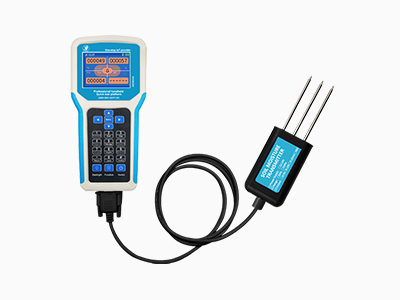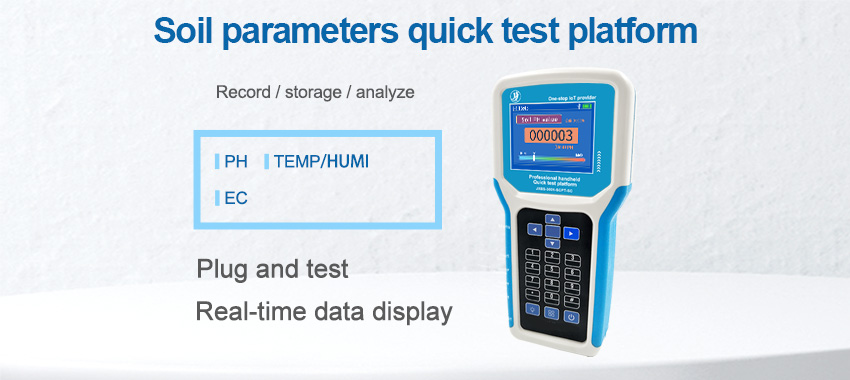Maximizing crop production is a critical goal in agriculture, as the world’s population continues to grow, and food security becomes increasingly important. Soil quality plays a vital role in crop growth and productivity, making it essential to monitor and manage soil conditions effectively. Soil sensor innovations have revolutionized the way farmers assess soil parameters, providing valuable insights for optimizing crop production. This article explores the significance of soil sensor technologies in enhancing agricultural practices, their applications, and potential future advancements.

Understanding Soil Quality and Plant Health:
Soil quality refers to the physical, chemical, and biological properties of soil that influence plant growth and overall crop productivity. Parameters such as soil moisture, temperature, pH levels, nutrient availability, and salinity directly impact plant health and nutrient uptake. Monitoring these factors is crucial for understanding soil conditions and implementing appropriate management strategies to optimize crop production.
Soil Sensor Technologies:
Soil sensors are devices designed to measure various soil parameters accurately. They utilize advanced technologies such as electrical conductivity, moisture detection, spectroscopy, and ion-selective electrodes to collect precise data. These sensors can be inserted into the soil or deployed in strategic locations, enabling real-time monitoring and data collection.
Monitoring Soil Moisture:
Soil moisture sensors are among the most commonly used soil sensors in agriculture. They measure the water content in the soil, providing critical information for irrigation management. By continuously monitoring soil moisture levels, farmers can ensure optimal irrigation scheduling and avoid overwatering or underwatering, thereby maximizing water use efficiency and reducing water wastage.
Assessing Nutrient Availability:
Soil sensors also play a crucial role in assessing nutrient availability in the soil. Nutrient sensors measure the concentration of essential elements such as nitrogen (N), phosphorus (P), potassium (K), and micronutrients. This information aids farmers in making informed decisions regarding fertilizer application, ensuring that crops receive the necessary nutrients for healthy growth. By optimizing nutrient management, farmers can enhance crop yield, quality, and sustainability.
Tracking Soil pH and Salinity:
Soil pH and salinity levels significantly affect crop growth and nutrient availability. pH sensors help farmers monitor soil acidity or alkalinity, allowing adjustments to be made to ensure optimal pH conditions for specific crops. Salinity sensors measure the salt concentration in the soil, alerting farmers to potential issues that may affect plant health. By understanding and managing soil pH and salinity, farmers can create favorable growing conditions and mitigate the negative effects of these factors on crop production.
Mapping Soil Variability:
Soil sensor technologies enable the mapping of soil variability within fields. By collecting data from multiple locations, farmers can identify areas with different soil characteristics, such as texture, moisture levels, or nutrient content. This information facilitates precision agriculture practices, including variable rate fertilization and irrigation. By tailoring inputs based on specific soil conditions, farmers can optimize resource allocation, reduce costs, and minimize environmental impact.

Future Directions and Challenges:
The future of soil sensor technologies holds immense potential for further advancements. Integration with other digital technologies, such as satellite imagery, drones, and artificial intelligence, can enhance data analysis, interpretation, and decision-making capabilities. Challenges, including sensor calibration, data standardization, and cost-effectiveness, need to be addressed to ensure wider adoption and accessibility of these technologies across diverse farming systems.
Conclusion:
Soil sensor innovations have revolutionized agricultural practices by providing real-time, accurate data on soil parameters critical for crop production. By continuously monitoring soil moisture, nutrient availability, pH, and salinity levels, farmers can implement precise and timely management strategies. Optimizing these conditions enhances crop health, productivity, and resource efficiency while reducing environmental impacts. As soil sensor technologies continue to evolve, their integration with other digital tools will further enhance precision agriculture practices, empowering farmers to maximize crop production and contribute to global food security.
